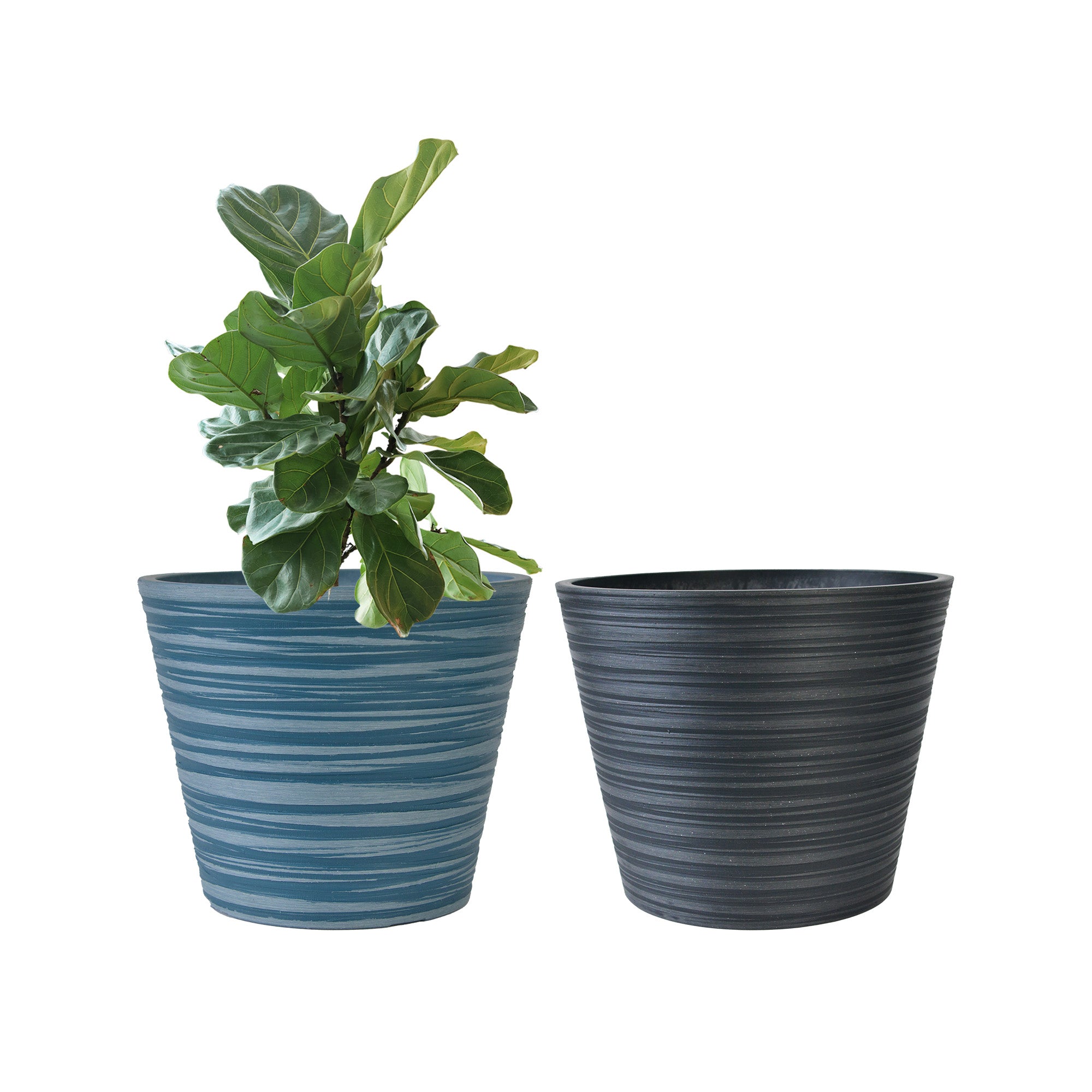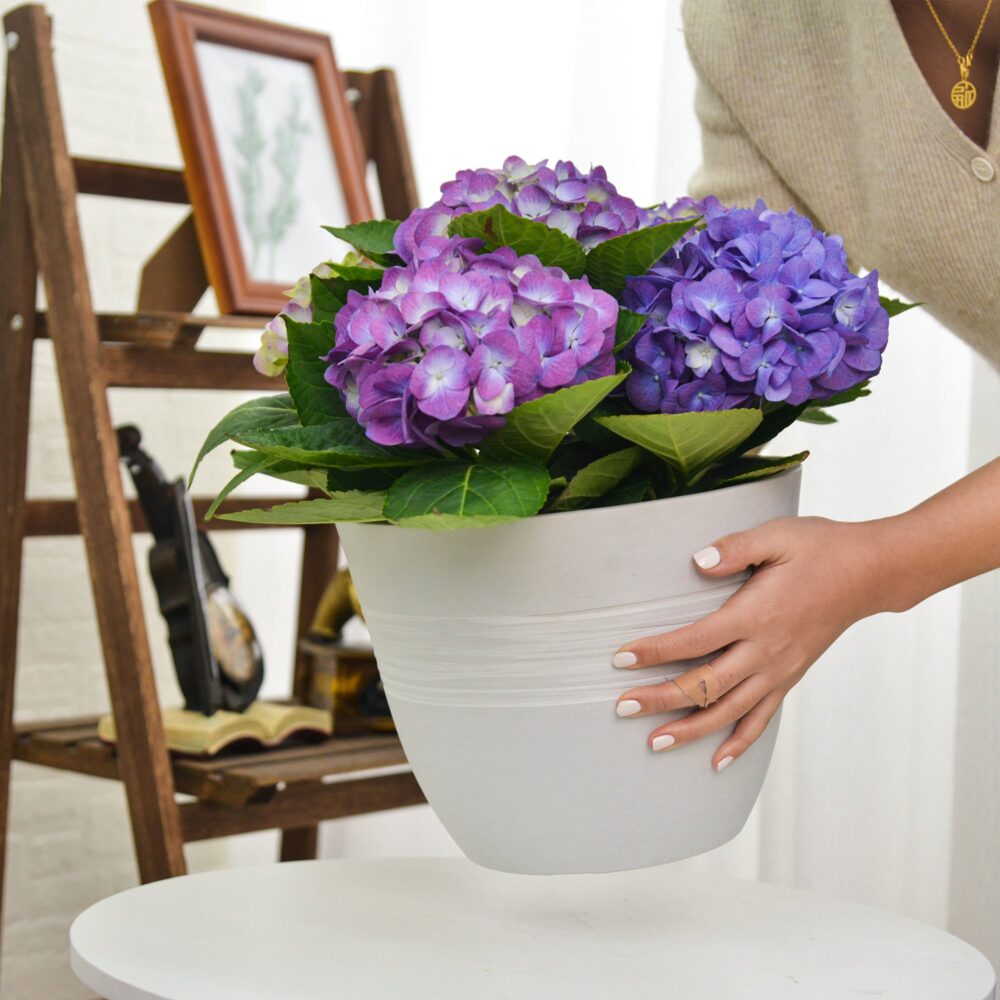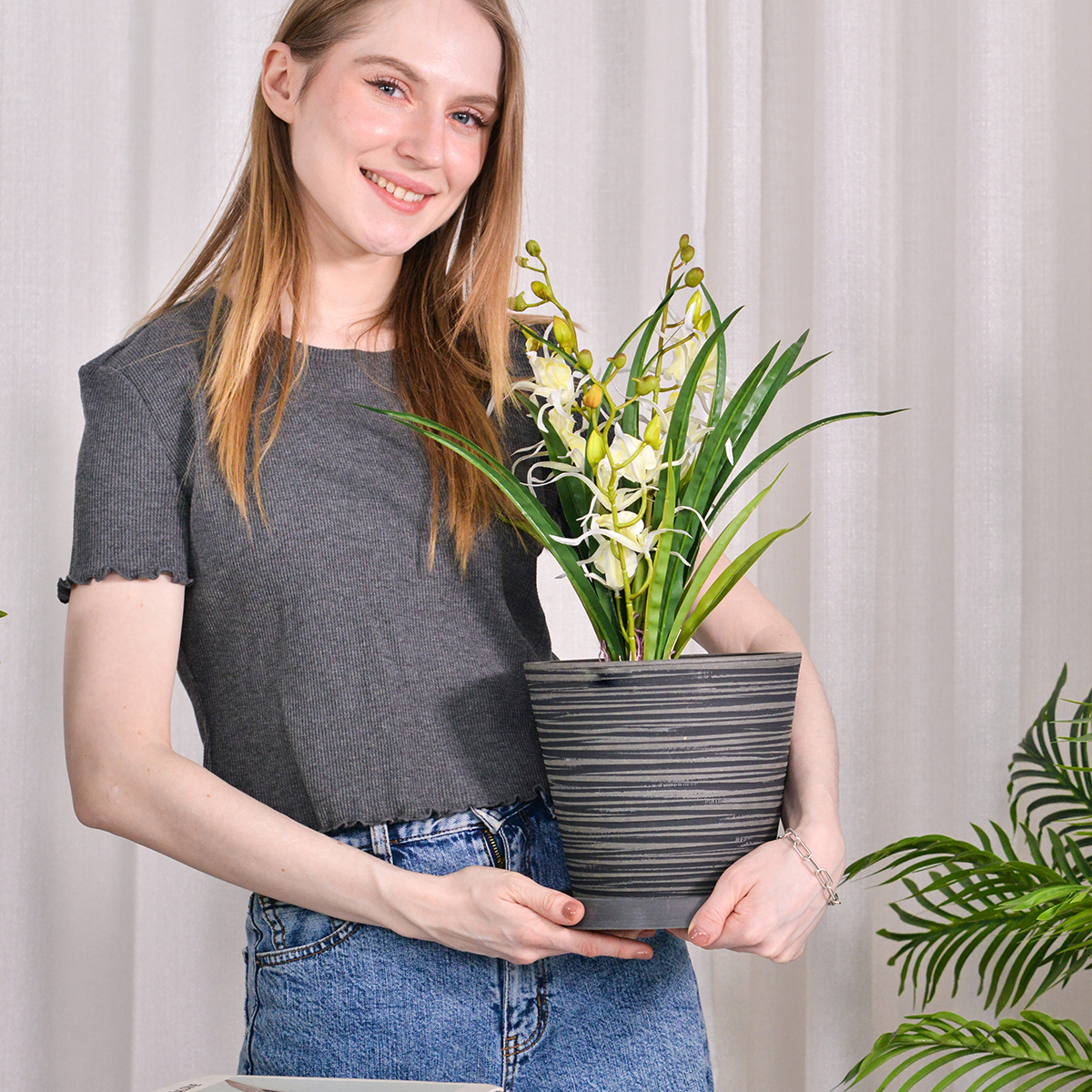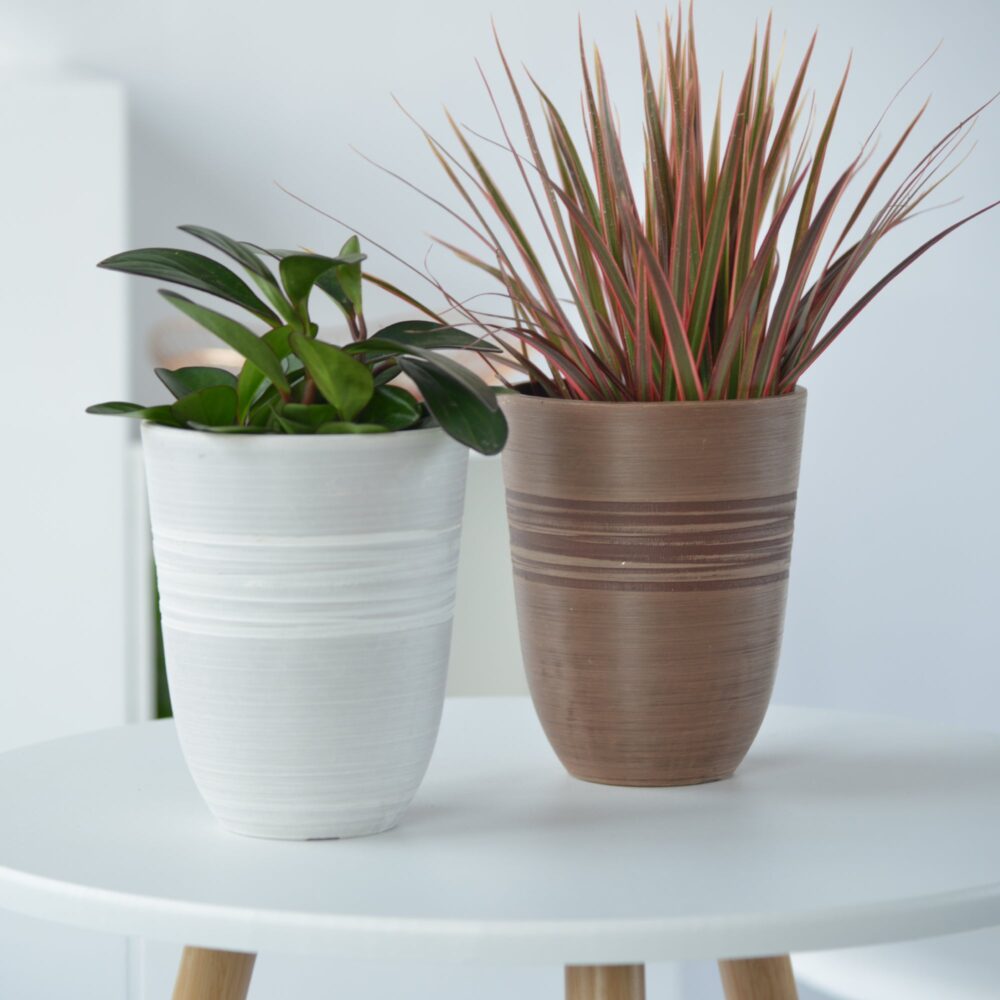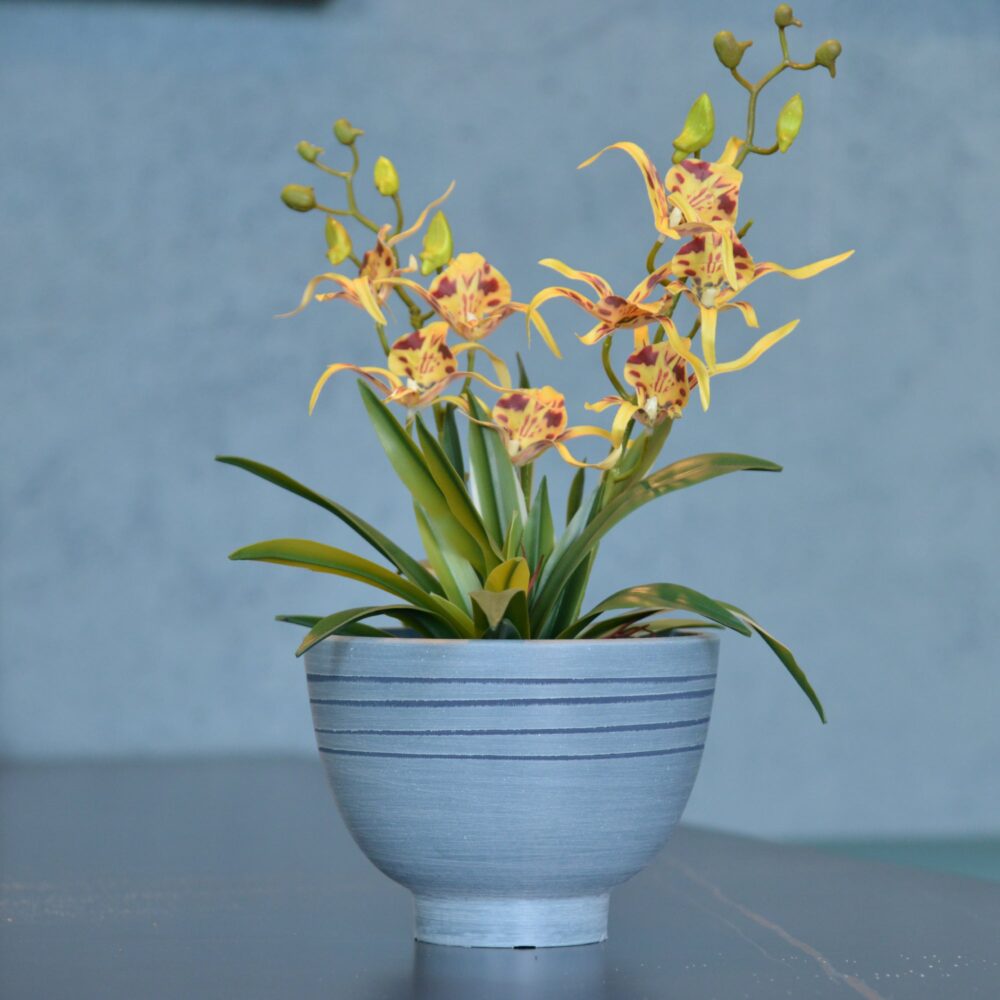Grow Stunning Gladiolus: A Comprehensive Guide to Planting Outdoors and in Pots
Gladiolus, often called ‘glads’, are striking summer-blooming flowers known for their tall flower spikes and vibrant colors. They are relatively easy to grow and make excellent cut flowers. Whether you’re planting them directly in your garden or in containers, this guide provides all the essential information for successfully growing gladiolus.
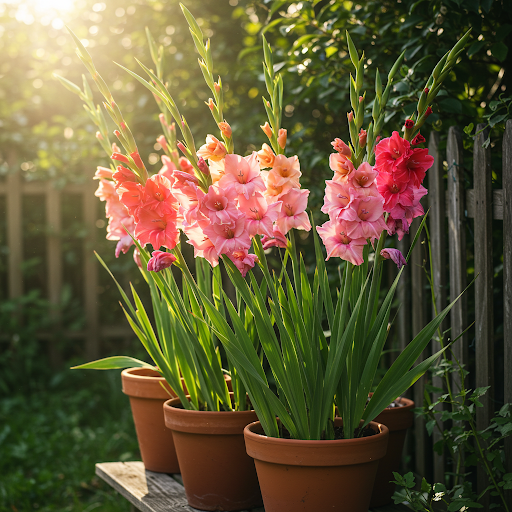
Gladiolus
Outdoor Planting
- Best Time to Plant: Gladiolus bulbs (corms) should be planted in the spring after the danger of frost has passed and the soil has warmed up. In most regions, this is typically from late spring to early summer. For a prolonged blooming season, you can stagger plantings every 2-3 weeks until early summer.
- Sunlight: Gladiolus need full sun, requiring at least 6-8 hours of direct sunlight each day. Ample sunlight ensures strong stems and vibrant flower colors. Choose a location in your garden that receives plenty of sunlight throughout the day.
- Soil: Gladiolus prefer well-drained soil that is rich in organic matter. The ideal soil should be slightly acidic to neutral, with a pH between 6.0 and 7.0. Amend heavy clay soils with compost, peat moss, or well-rotted manure to improve drainage and fertility. Sandy soils can also benefit from organic matter to help retain moisture and nutrients.
- Planting Corms: Dig holes about 4-6 inches deep and space them 6-8 inches apart. Place the gladiolus corms in the holes with the pointed end facing upwards. Cover the corms with soil and gently firm the soil surface. Water thoroughly after planting to settle the soil.
- Watering: Gladiolus need consistent moisture, especially during the growing season and when they are blooming. Water deeply when the top inch of soil feels dry. Avoid overhead watering to prevent fungal diseases; instead, water at the base of the plants.
- Staking: Due to their height, gladiolus spikes can be prone to bending or breaking, especially in windy conditions. Provide support by staking the plants as they grow. Insert stakes near the corms at planting time to avoid damaging the bulbs later.
- Fertilizing: Gladiolus benefit from regular feeding. Apply a balanced fertilizer every 4-6 weeks during the growing season. Follow the fertilizer package instructions for application rates. Avoid over-fertilizing, which can lead to weak stems and fewer flowers.
- Climate: Gladiolus are generally hardy in USDA zones 7-10. In colder zones, they are typically grown as annuals, and corms are dug up in the fall and stored indoors over winter.
Potting Gladiolus
- Choosing the Right Pot: Gladiolus can be successfully grown in pots, which is ideal for smaller gardens or patios. Select pots that are at least 12 inches deep and 12 inches wide to provide enough space for the corms and root development. For multiple corms in one pot, choose a wider container. Ensure pots have drainage holes to prevent waterlogging.
- Potting Mix: Use a well-draining, high-quality potting mix. You can amend the mix with perlite or vermiculite to further improve drainage. Adding a bit of compost can enhance fertility.
- Planting in Pots: Fill the pot with potting mix, leaving about 6 inches of space from the top. Plant the gladiolus corms as you would in the garden, 4-6 inches deep and spaced about 4-6 inches apart in larger containers. Water well after planting.
- Watering in Pots: Container-grown gladiolus may require more frequent watering than those in the ground, as pots tend to dry out faster. Check the soil moisture regularly and water when the top inch feels dry. Ensure water drains freely from the pot.
- Fertilizing in Pots: Potted gladiolus need regular fertilization. Use a balanced liquid fertilizer every 2-3 weeks during the growing season, as nutrients can leach out of pots more quickly.
- Overwintering Potted Gladiolus: In colder regions, potted gladiolus can be easier to overwinter. After the foliage has died back in the fall, you can bring the pots into a cool, dry, and dark location, such as a garage or basement. Alternatively, you can dig up the corms from the pots and store them similarly to garden-grown corms.
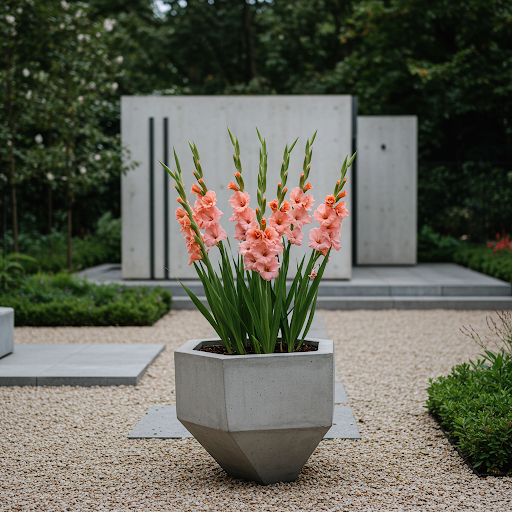
Gladiolus
By following these guidelines, you can enjoy the spectacular beauty of gladiolus flowers, whether planted in your garden or in decorative pots.
For more detailed information, you can explore the Wikipedia page on Gladiolus.
Planter 5 in W / 8 in W / 12 in W or Indoor Outdoor Plants, Modern Decorative Plant Pots with Drainage Hole, Decorative Flower Pots
By greenship-seo|2025-04-10T06:37:58+00:00January 16, 2025|Categories: Hand-carving Series|Tags: Decorative Flower Pots|
Planter for Indoor Outdoor Plants, Set of 2 Modern Decorative Plant Pots with Drainage Hole, Decorative Flower Pots
By greenship-seo|2025-01-14T12:26:44+00:00January 14, 2025|Categories: Hand-carving Series|Tags: Decorative Flower Pots|
K2-11T
By greenship|2024-08-13T04:21:25+00:00August 13, 2024|Categories: Hand-carving Series|
k2-21G
By greenship|2024-08-13T06:17:26+00:00August 13, 2024|Categories: Hand-carving Series|
Plant Pots 6 inch 8 inch 10 inch for Indoor Plants, Set of 3 Modern Decorative Planter ts with Drainage Hole, Decorative Flower Pots
By greenship-seo|2025-04-10T06:39:28+00:00January 14, 2025|Categories: Hand-carving Series|Tags: Decorative Flower Pots|
8 inch/10 inch Planter Indoor Plants, 2 Pack Modern Decorative Plant Pots with Drainage Hole, Cute Bowl Shape Flower Pots
By greenship-seo|2025-04-10T08:03:42+00:00January 9, 2025|Categories: Hand-carving Series|Tags: Decorative Flower Pots, Self-Watering Pots|

